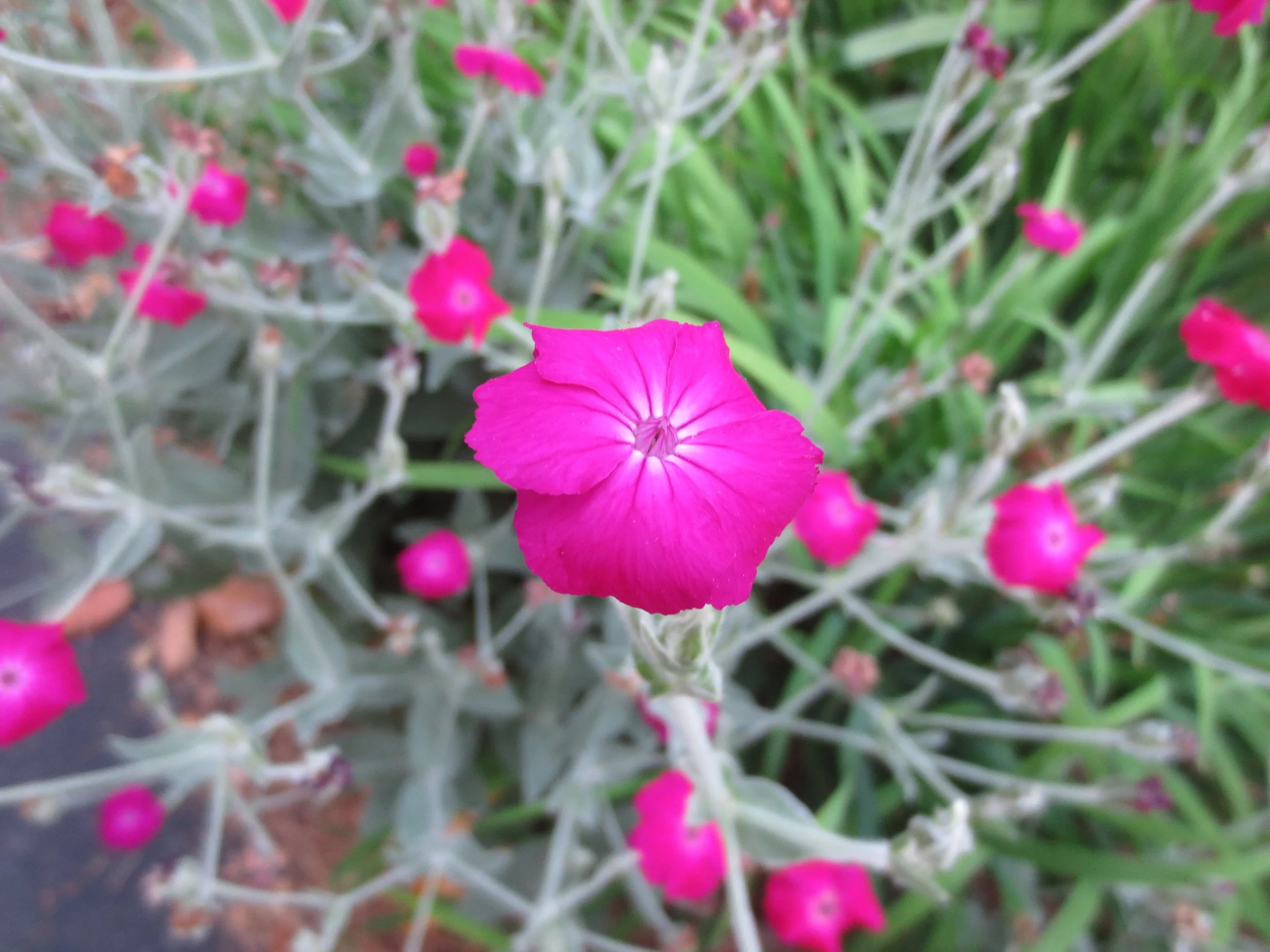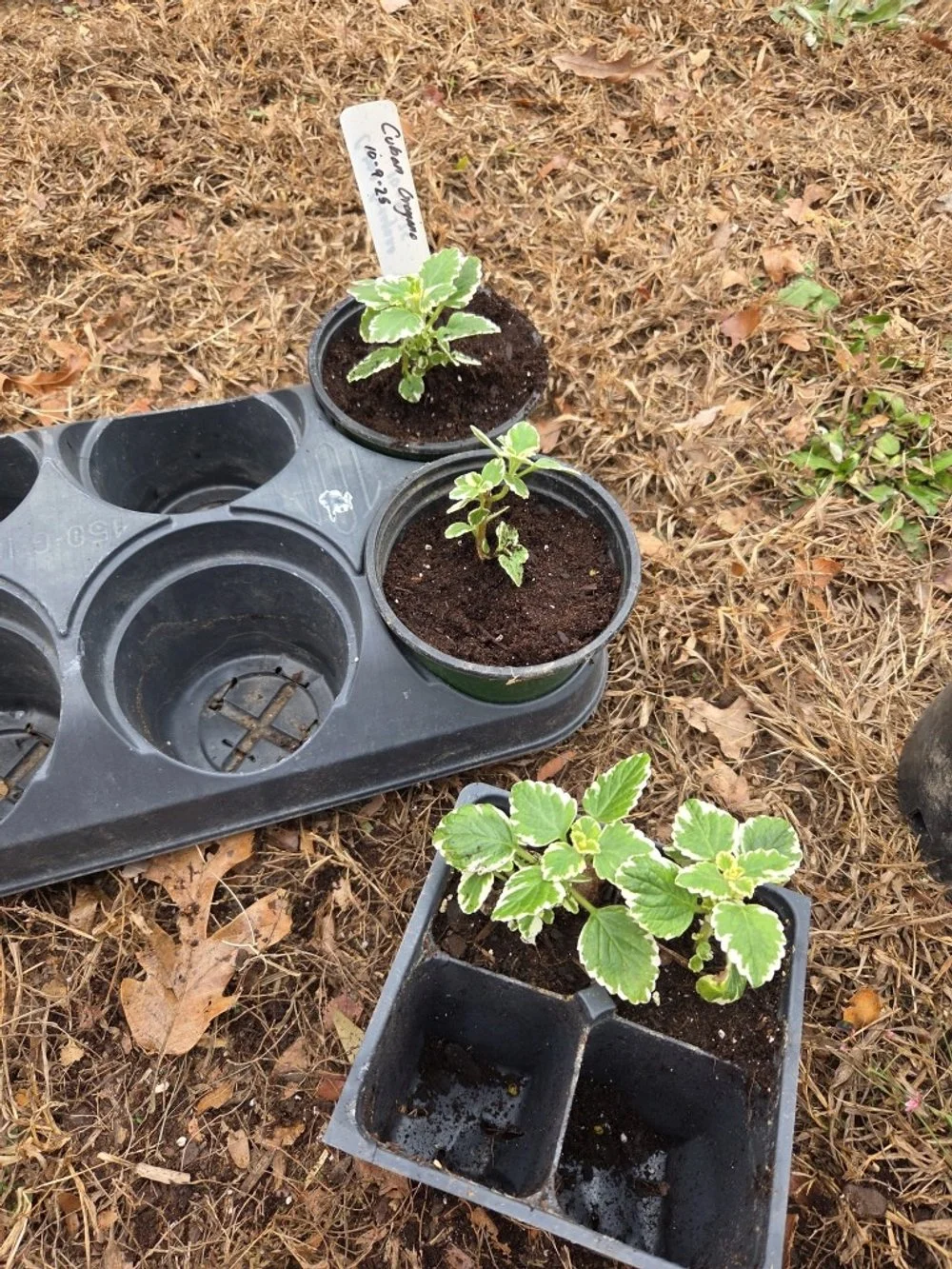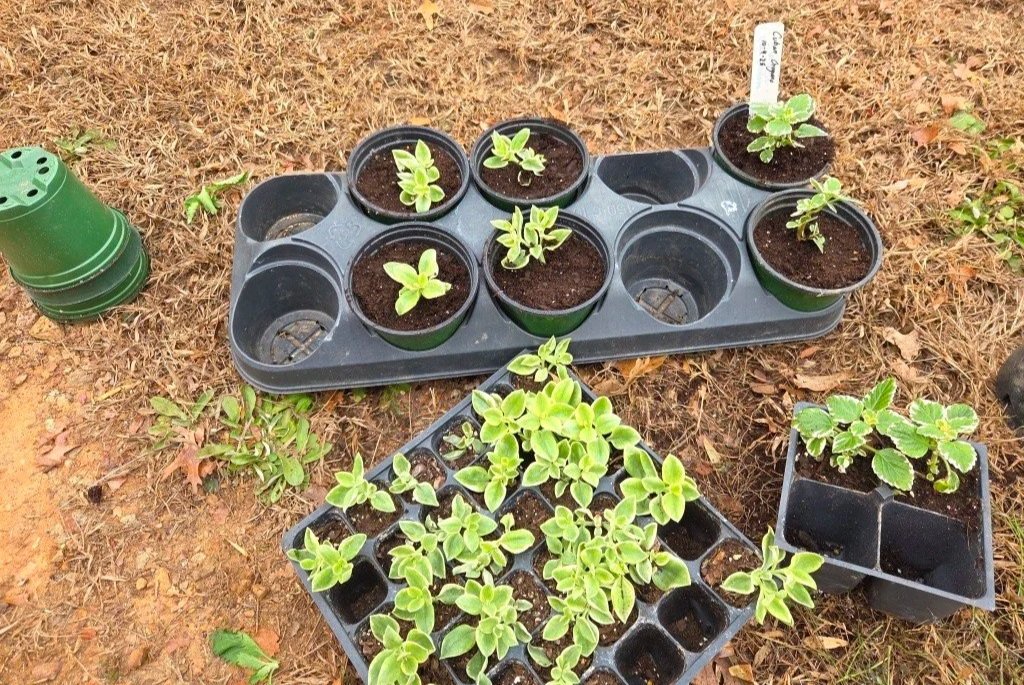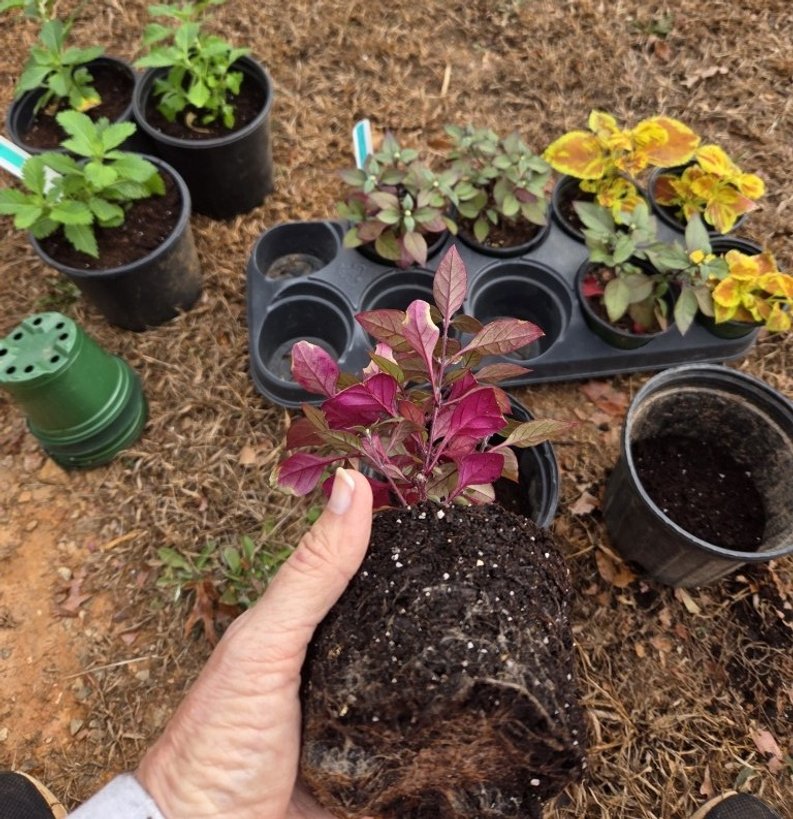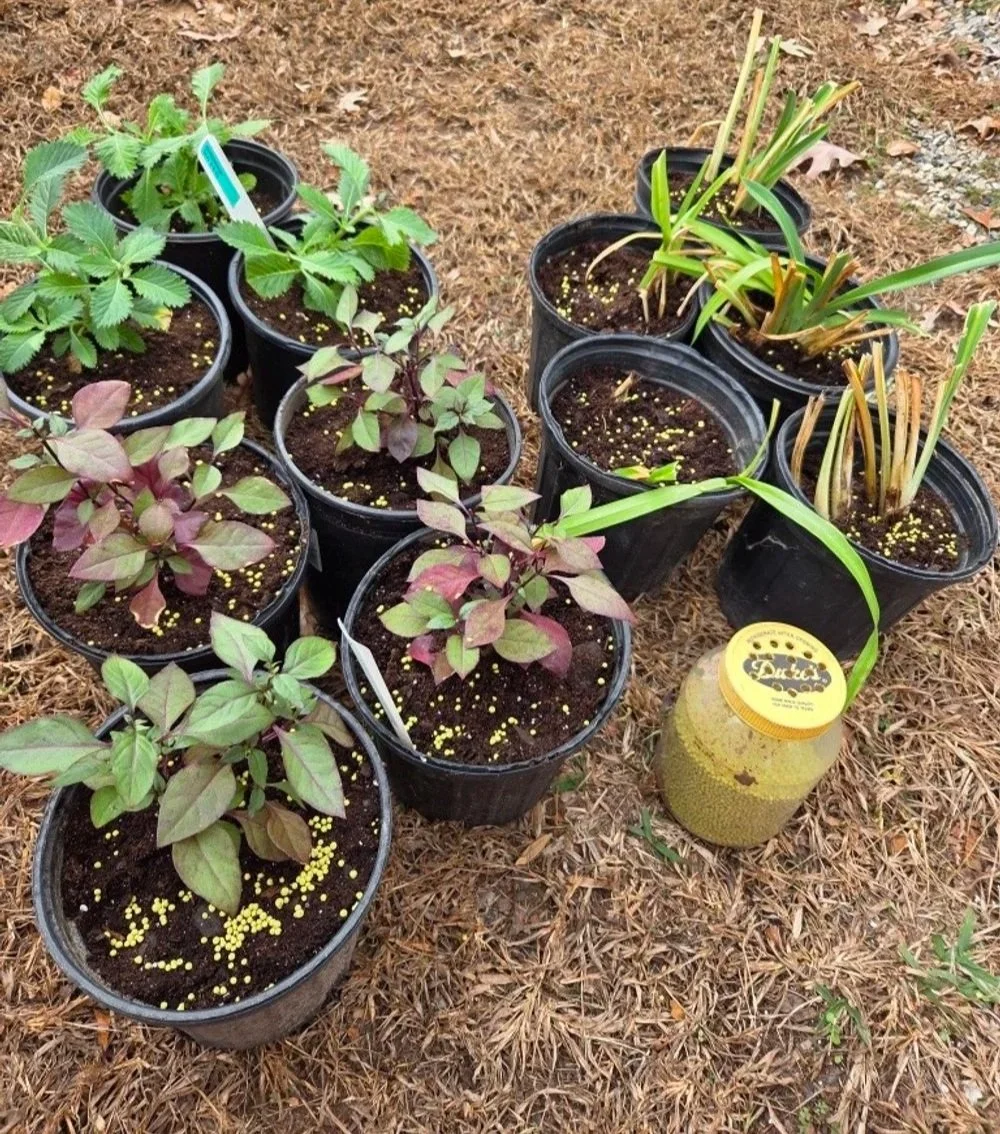It is Thanksgiving week, and I am concentrating on hosting family and friends rather than researching cool plants. Instead of my normal format, I want to share a few photos of my pre-winter tasks. Other than a single cold snap in October, this year’s autumn has been unusually warm. This means that I had extended time to take a few cuttings for rooting in the greenhouse, as a head start on next gardening season.
A green-and-white container combination seems fresh and cool in the hottest part of the summer. I like to combine Cuban Oregano with variegated ivy and Diamond Frost Euphorbia. The Cuban Oregano (Plectranthus variegata) shown here was a gift from my friend Ann in 2009. The plant is not cold-hardy, so I have overwintered a few cuttings every year since then. It is a wonderful memory of our friendship. I take more cuttings than I need as insurance against rooting failure, so I have extras to share. Six weeks ago, I started four branch tip cuttings to take advantage of apical dominance – plants like to grow from their tips -- in a recycled, sanitized four-pack. They rooted well, so graduated this week to four-inch containers.
Cuban Oregano (Plectranthus variegata) is moving from a 4-pack to a 4-inch container.
I adore the succulent groundcover Mezoo. It has gone by several genus names, including Aptenia, Doreanthus, and Mesembryanthemum. I do not know which one of these is correct, so I rely on the common name in my labeling. Mezoo roots readily and grows fast, so I stuck my cuttings in two-inch plugs. Most have rooted and are ready to graduate to four-inch pots. In late February, they will need to move up again, to one-gallon containers.
About that labeling: the plant labels you see here are sections of an old window blind. A single damaged vinyl blind (cat owners, IYKYK) can be recycled into a lot of plant labels. The slats are flexible enough to cut to the preferred length with kitchen shears, and strong enough to last. They don’t rot or rust. For plants that will go into the ground without their labels, I use a Sharpie Extreme marker on the blind. The Extreme will withstand UV rays and frequent watering without fading. For transplants that will have their identifying label planted along with the plant itself, I use weather-resistant tape on a Brother P-Touch Label Maker. Some of these have lasted more than five years for me. Sadly, a few have outlived the plants they identified.
Lovely, heat-tolerant, succulent groundcover Mezoo is moving from plugs to 4-inch pots. It will share a tray with Cuban Oregano, since they both prefer drier conditions in the greenhouse.
I took a few cuttings of favorite annuals, Alternanthera ‘Purple Prince’ and Coleus ‘Freckles.’ Here, you see that I have removed the Alternanthera from its four-inch container to confirm that it has enough roots to move up to a one-gallon size. I do not know the science behind it, but plants prefer to move into slightly larger containers. If a two-inch plug goes directly into a three-gallon container (I exaggerate, but you get the point), it will languish and fail. That same rooted two-inch plug will move successfully to a four-inch container. Once that four-inch container has roots showing around the bottom and sides, it can be bumped up to the next size, and then again once that pot shows roots around its outside perimeter. To ensure the good health of a plant, move it to the next larger size before it gets rootbound, meaning that the container is overfilled or choked with roots. Even though I am using round pots in these photos, I far prefer the square pots. There seems to be less root girdling with squares than with rounds. Rounds have the advantage of using less potting soil.
Checking that the cutting has rooted well enough to move to the next size container.
Here, I have moved the Alternanthera, the Coleus, and Centrantherum (“Lark Daisy”) to one gallon containers for the winter. And here is my final gardening tidbit for this blog: To apply the time-release fertilizer that will keep these plants well-fed until spring, I took an empty plastic one-quart container, washed it well, and used a small bit to drill a bunch of holes in the plastic lid. This works like a large salt-shaker to apply fertilizer (or any pelletized product) easily and evenly. I have multiple lids, with different diameter holes. Milorganite, for instance, is a small pellet that requires a smaller gauge hole for ideal distribution.
Alternanthera, Centrantherum, and a few Daylily divisions are potted up and ready to overwinter in the greenhouse. I pinched the growing tips and removed the flower buds to encourage stocky, well-branched specimens.
Happy Thanksgiving to you and yours.
